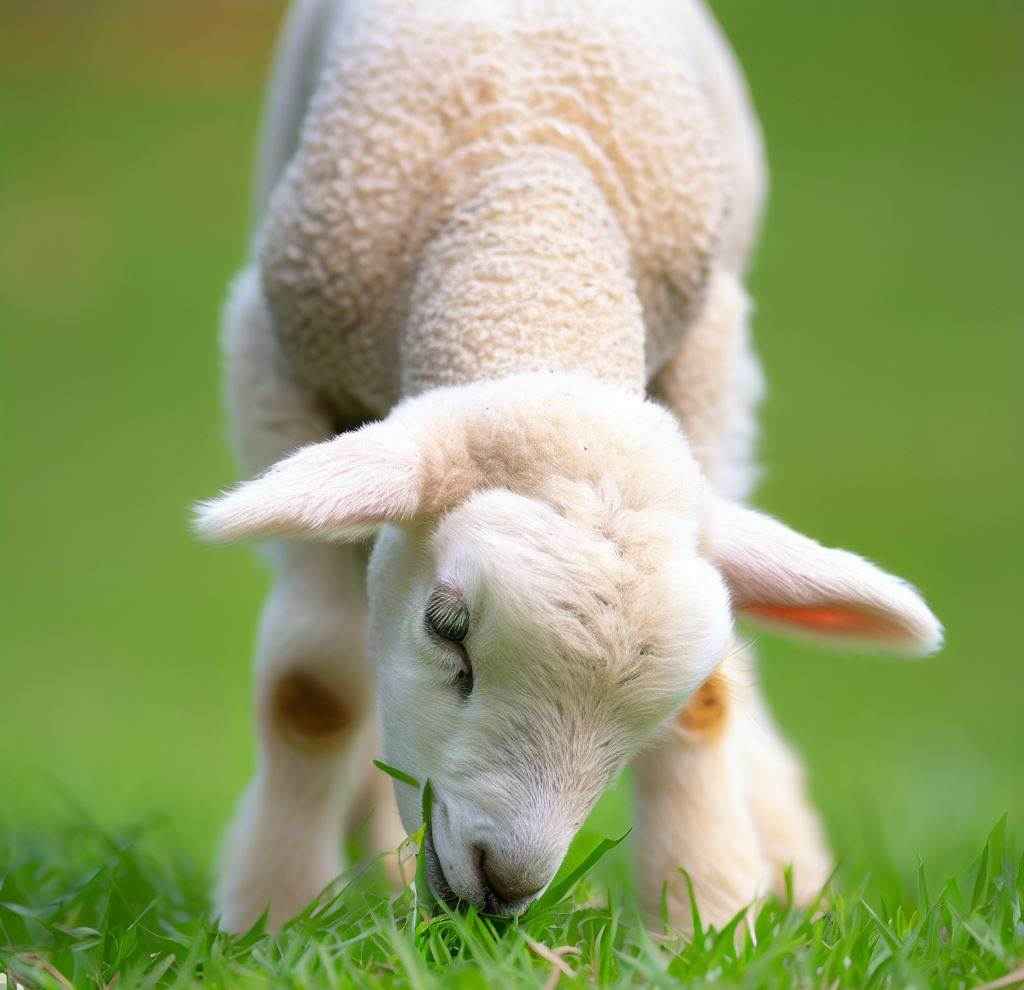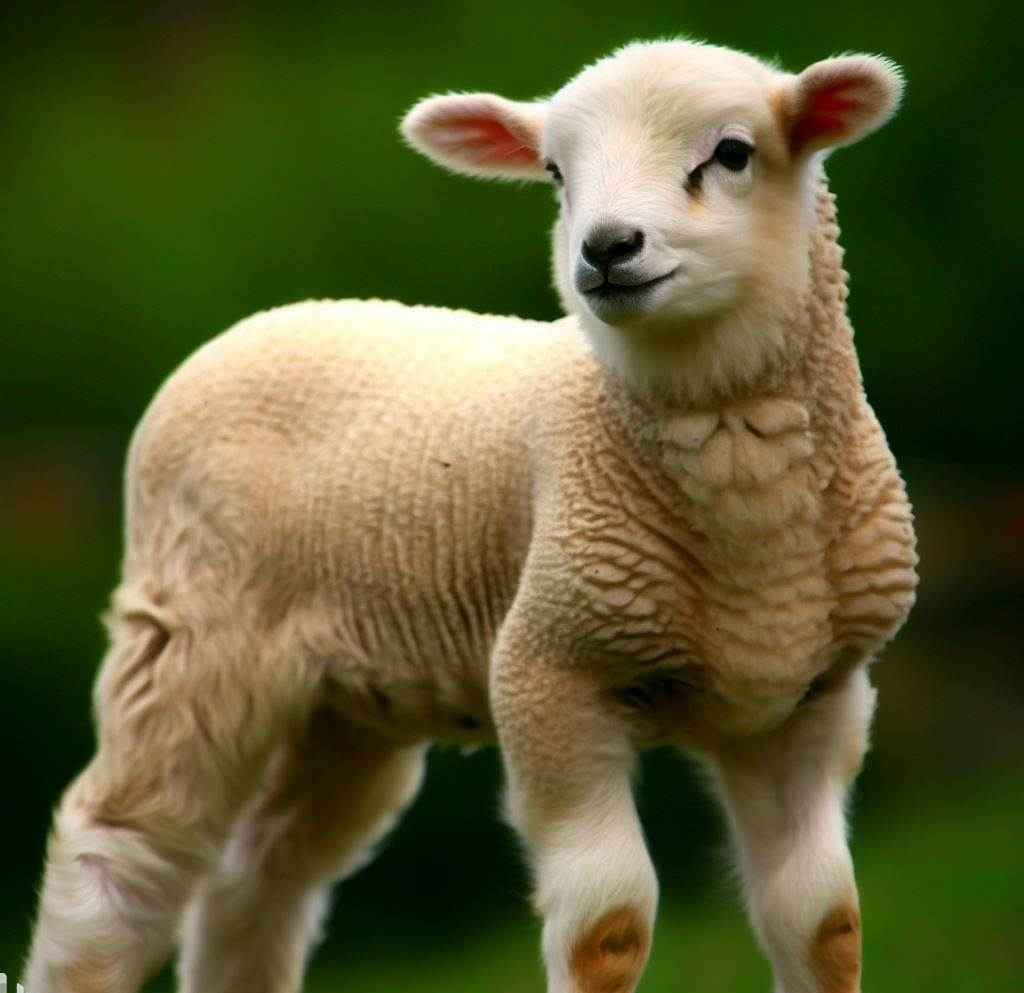Really Do Lambs Have Tails?
Do Lambs Have Tails? The lambs do have tails. Lambs are born with tails that contain blood arteries, nerves, and vertebrae structures that may be necessary for survival in cold climates. There are situations when docking is avoided. There are various sheep breeds worldwide with distinct tail lengths. Some lambs have long, intact tails that can grow up to several feet, while others have stumpier, untargeted tails that are not designed for docking. These furry, gentle creatures sport tails that are often as endearing as the lambs themselves. Lambs as like humans possess a tailbone that is situated at the base of their spine.
Tails in lambs are crucial for thermoregulation, as they help retain body heat during cold weather by curling around themselves by ensuring they remain warm and comfortable in chilly conditions. Additionally, lambs use their tails as a form of communication. Tail-wagging is a means through which lambs express their emotions whether it be excitement, contentment or distress. It’s their way of talking to their fellow flock members. These tails contribute to a lamb’s balance and mobility.
When lambs navigate uneven terrain or engage in playful frolics, their tails act as a counterbalance by aiding in stability and graceful movements. While some might wonder about the necessity of these tails so, it is clear that they are not just adorable accessories while they are functional and integral parts of a lamb’s life. So, the next time you encounter a lamb, take a moment to appreciate its tail – a remarkable feature that adds to the charm of these delightful animals.
Introduction:
Lambs are those adorable and woolly creatures that often symbolize innocence that have been a subject of curiosity for many. One of the questions that frequently arises is Do lambs have tails. In this post, we will delve into the intriguing world of lambs by exploring the presence of tails, their significance and various related aspects.
Do Lambs Tails Get Cut Off?
Yes in some cases the lambs’ tails do get cut off it is a practice known as “tail docking.” This is a somewhat controversial and debated procedure primarily carried out in farming and agricultural settings. Male lambs are castrated for simpler control as they age, while young lambs are docked for cleanliness and to lower the danger of fly strikes.
Tail docking is typically performed when lambs are very young which is often within the first few weeks of their lives. It involves the removal of a portion of the lamb’s tail by leaving them with a shorter tail or in some cases, no tail at all. The main reasons behind tail docking are hygiene and disease prevention. A shorter tail is believed to reduce the risk of fecal matter accumulating on the tail which can attract flies and lead to health issues such as flystrike a condition where flies lay eggs in the damp wool around the tail.
The tail docking is a subject of controversy. Critics argue that it can be painful and stressful for the lambs for some regions and organizations have banned or strictly regulated the practice.
Do Baby Lambs Have Tails?
The baby lambs are born with tails. These adorable newborns enter the world complete with a tail, just like their adult counterparts. The tail of a baby lamb is a continuation of their spine and is usually covered with the same soft and fluffy wool that envelops their bodies. While baby lambs are born with tails but there are instances where the tails may be subjected to tail docking when they are very young.
Tail docking involves the removal of a portion of the lamb’s tail. This practice is somewhat controversial and is primarily carried out in farming and agricultural settings for various reasons such as preventing health issues and improving hygiene. This is important to emphasize that not all baby lambs undergo tail docking and many are allowed to keep their tails intact.
The decision to dock a lamb’s tail is often based on specific farming practices and regional regulations. The baby lambs are born with tails but whether those tails remain intact or undergo tail docking can vary depending on the circumstances and practices of the farm or region where they are raised.
Do Sheep Have Tails?
Sheep do have tails. The tail of a sheep which is situated at the base of its spine and is a crucial component of its anatomy. A sheep’s tail is distinctive because it has the same dense, woolly coat that covers the rest of its body. One of the adorable characteristics of these creatures is their recognizable woolly tail. Sheep tails serve multiple functions in their lives.
Firstly, they play a role in thermoregulation. In colder climates or weather conditions but sheep can curl their tails around themselves to help retain body heat, assisting in staying warm. This adaptive feature is particularly essential for sheep as they are often found in various climates around the world. Sheep use their tails as a form of communication. Tail-wagging can convey emotions and intentions to other members of the flock.
Whether this is a sign of excitement, contentment or agitation so, the tail serves as a vital means of expressing themselves within their social groups. Sheep have tails that serve practical purposes such as regulating body temperature and communicating with their fellow sheep.
Why Are Sheep Tails Docked?
Young lambs are often clipped their tails to prevent fly strike and keep their behinds clean while male lambs are castrated to make handling easier as they age. Sheep tail docking is a practice carried out in some farming and agricultural settings for various reasons. This controversial procedure involves the removal of a portion of a sheep’s tail when they are very young and is usually within the first few weeks of life. The primary reasons cited for tail docking are hygiene and disease prevention.
One of the main objectives of tail docking is to reduce the risk of fecal matter accumulation on the tail. In humid or damp conditions the fecal matter can get trapped in the wool around the tail by creating a conducive environment for flystrike. Flystrike is a severe condition where flies lay their eggs in the soiled wool, leading to maggot infestation and significant harm to the sheep’s health. By docking the tail, it’s believed that the risk of flystrike is diminished. Another reason for tail docking is to enhance the overall cleanliness of the sheep and the shearing process.
A shorter tail is thought to make shearing more efficient and to prevent contamination of wool during processing. Very essential to note that tail docking is a contentious practice. Critics argue that it can be painful and stressful for the sheep and it has been banned or restricted in some regions and by various animal welfare organizations. The sheep tails are docked primarily for hygiene and disease prevention reasons although, the practice remains a subject of debate within the agricultural and animal welfare communities.
Facts & Features Of Lamb:
Sheep are fascinating creatures with a rich history of interaction with humans. Here are some intriguing facts and features of sheep:
- Lamb is a domesticated animals over 10,000 years ago that have played a crucial role in agriculture, providing wool, milk and meat.
- There are over 1000 different breeds of sheep worldwide where each with its unique characteristics including wool type, size and adaptability to various climates.
- Lamb are renowned for their wool production.
- Their fleeces come in a range of textures and colors from fine merino wool to coarser varieties.
- Lamb are known for their strong flocking instinct.
- They tend to stay close together and follow a leader making them relatively easy to manage in herding.
- Lamb are herbivores that primarily grazed on grass and other vegetation.
- Their complex stomachs allow them to efficiently digest plant material.
- Lamb communicate through various body language including tail positions.
- A raised tail may indicate alertness or excitement while a lowered tail can signal relaxation or contentment.
- Lamb contribute significantly to the global economy through wool and meat production.
- Wool is used for textiles while lamb and mutton are popular meats in many cuisines.
- Lamb grazing can influence ecosystems and landscapes.
- Sustainable grazing practices are essential to maintain biodiversity and prevent overgrazing.
- Lamb are often used symbolically in literature, religion and folklore for representing innocence, meekness, or followership.
- Lamb is a remarkable species found on every continent except Antarctica, has played a diverse and valuable role in human history and agriculture to adapt to a wide range of climates and landscapes.
FAQs:
1 Why do they cut off lambs tails?
Lamb tail docking is done mainly for hygiene and disease prevention. Trimming the tails reduces the risk of fecal matter accumulation which can attract flies and lead to health issues like flystrike. While it remains a debated practice it aims to protect the welfare of the lambs in farming and agricultural settings.
2 Why do lambs get tailed?
Lambs get their tails docked primarily to prevent hygiene-related issues. Trimming their tails reduces the risk of fecal matter buildup which can attract flies and lead to health problems like flystrike.
3 Why are lambs born with tails?
Lambs are born with tails as it’s a natural part of their anatomy. Just like humans have tailbones, lambs have tails, which are essential for various functions including thermoregulation, communication and balance. Tails are inherent features that contribute to a lamb’s overall well-being and behavior.
4 Is tail docking painful?
Tail docking is a painful procedure for lambs which involves removing a portion of the tail causing discomfort and stress. This procedure is controversial in agricultural and animal welfare communities due to concerns about animal welfare.
5 Can you eat lambs tails?
Yes you can eat lamb tails. In some cuisines the lamb tails are considered a delicacy and are prepared in various ways such as roasting or stewing. They are valued for their rich flavor and tender meat which often enjoyed as part of traditional dishes in regions where lamb is a dietary staple.




